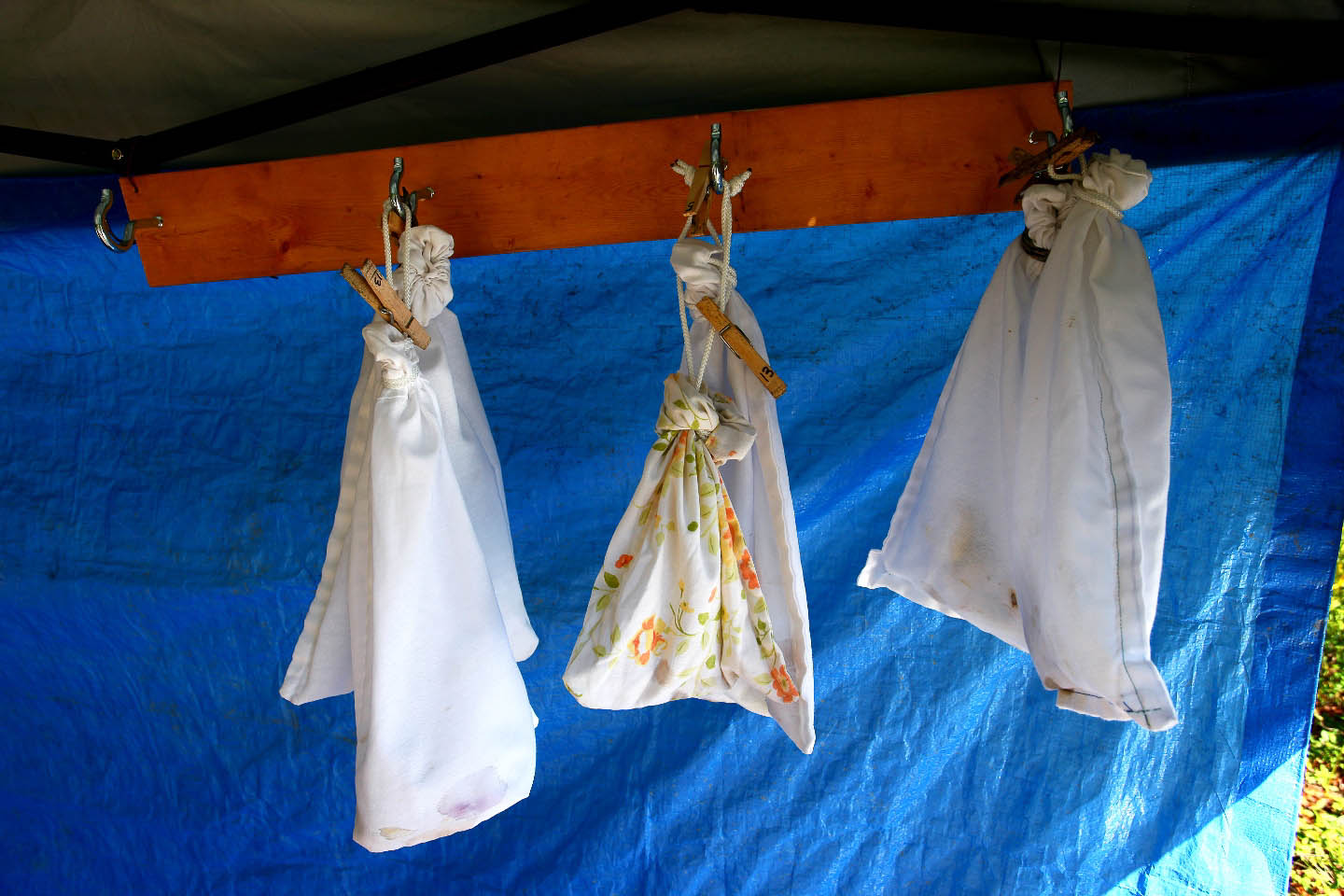Investigation of shrubland migrants on the Eastern Shore of Virginia NWR
Azalea Moves a Bit North
September 3, 2009Red knot resight data indicates flux between two migration staging areas
September 4, 2009
Written by Bryan Watts
September 3, 2009
Along the Atlantic Coast, significant barriers such as large bodies of water act as migration bottlenecks funneling large numbers of birds onto relatively small land masses. For southbound migrants, the Chesapeake Bay is one of the largest physical barriers along the East Coast of North America. Migrants that reach the mouth of the Bay in the hours just before dawn land near the tip of the Delmarva Peninsula. Many of these birds depend on habitats found within the lower peninsula for rest and refueling before leaving on the next leg of their migration. Because of its unique geographic position, the lower Delmarva contains some of the most critical habitats for migrant birds within the Atlantic Flyway. The Eastern Shore of Virginia National Wildlife Refuge is particularly significant because of its position at the southern tip of the peninsula.
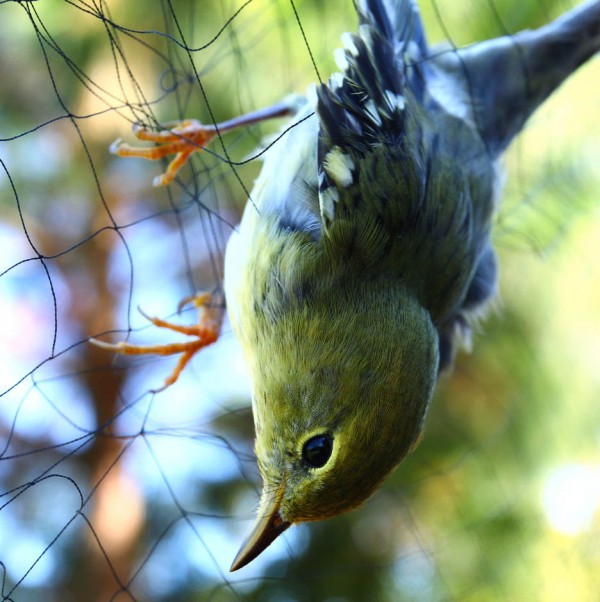
A blackpoll warbler caught in a mist net. Photo by Bryan Watts.
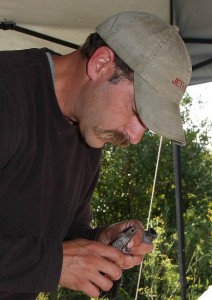
Bander in Charge, Jethro Runco, bands a Gray Catbird. Photo by Bart Paxton.
In the fall of 2009, the U.S. Fish and Wildlife Service initiated a study of shrubland migrants within a network of several refuges including the Eastern Shore of Virginia National Wildlife Refuge. The Eastern Shore Refuge is currently managing approximately 280 acres in an early successional grassland/shrub-scrub habitat. The primary goal of this study is to collect baseline data on the number and diversity of fall migrants using this habitat complex. The information will be used to better manage habitat for migrating songbirds on the lower Eastern Shore of Virginia. The study includes point counts, vegetation work, and banding. The Center for Conservation Biology partnered with the refuge to conduct field work with Shannon Ehlers doing point counts and vegetation work and master bander Jethro Runco operating the banding station.
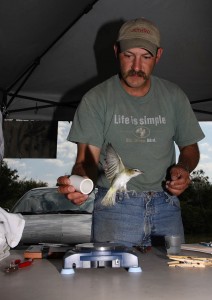
Jethro releases a red-eyed vireo after banding it. Photo by Bart Paxton.
In 2009, songbird banding was conducted on 57 days between 15 September and 30 November. The station included 15 mist nets situated in dense shrub habitat. A total of 7,860 birds were banded of 85 species (Table 1). Captures included 6086 (77.5%) nearctic migrants, 1683 (21.4%) neotropical migrants, and 91 (1.1%) resident birds. Average capture rate was 175 birds/100 net hours. Operation days included 17 days with greater than 200 captures, 8 with greater than 300 captures and 3 with greater than 400 captures. An incredible effort with such a small field crew and a testament to the banding experience of Jethro. Plans are in place for the project to continue during the fall of 2010.
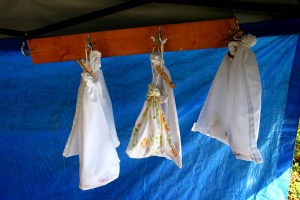
Birds hang in cloth holding bags waiting to be banded and processed. Photo by Bryan Watts.

Bander, Shannon Ehlers, holds a black-throated green warbler. This species is primarily an inland migrant with very few passing through the outer Coastal Plain. Photo by Jethro Runco.

Shrub-scrub layer mast crops on the lower Delmarva Peninsula provide cover and food for fall songbird migrants. A common shrub-scrub level plants on the Delmarva include: winged sumac… Photo by Bart Paxton.
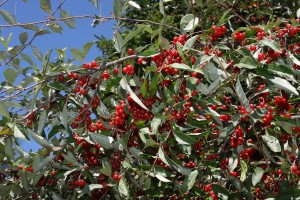
Autumn olive… Photo by Bart Paxton.

Wax myrtle… Photo by Bart Paxton.

and grape vine. Photo by Bart Paxton.

Figure 1. Temporal distribution of landbird captures during the 2009 fall trapping season. Graph by the Center for Conservation Biology.
This study was conducted in conjunction with the staff of the Eastern Shore of Virginia National Wildlife Refuge. It is part of a larger study focusing on assessing population trends of fall migrant landbirds utilizing shrub-scrub habitat.
Project sponsored by The Center for Conservation Biology (CCB) and the U.S. Fish & Wildlife Service (USFWS) Refuge Program.

